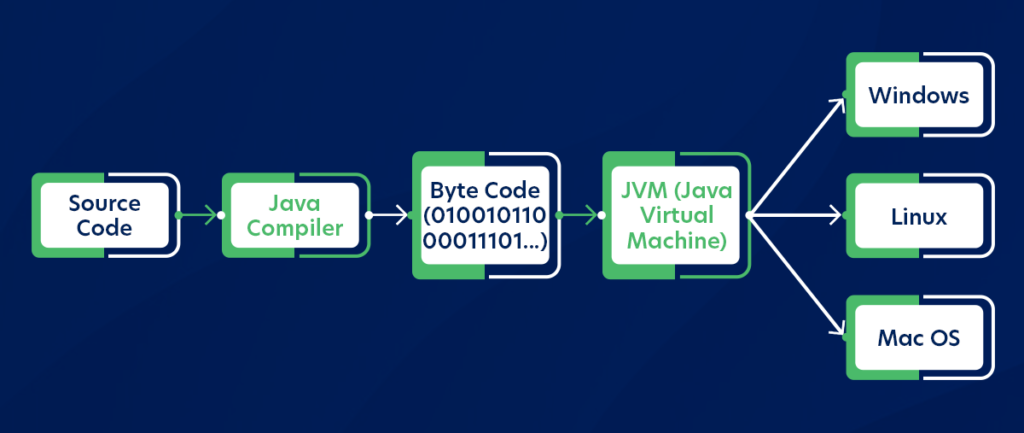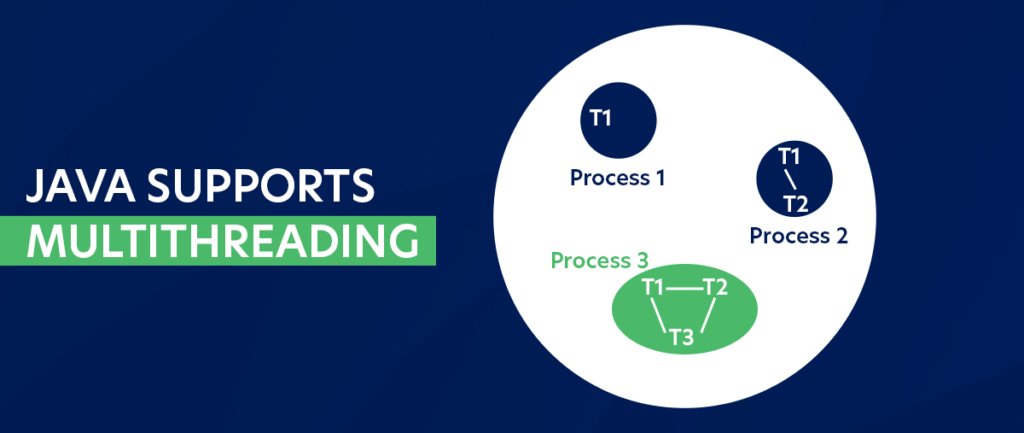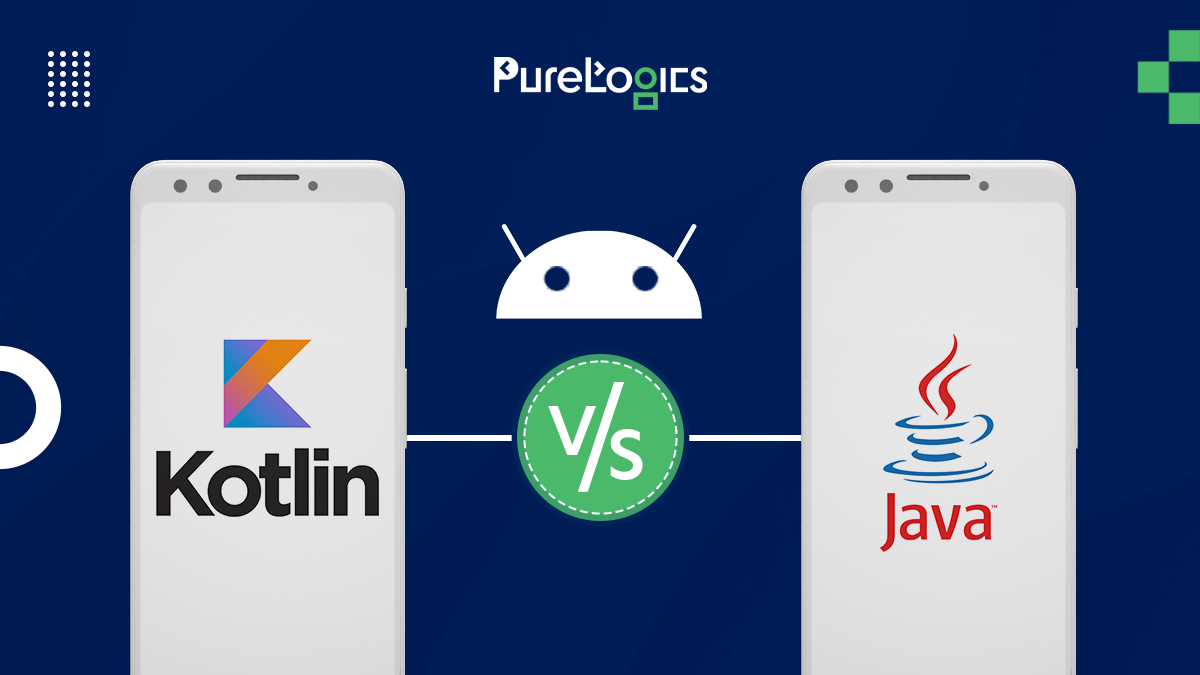Kotin vs Java – Which is a better programming language? This is a long-lasting debate on the search engines. It looks like this battle won’t reach its last chapter. However, this never-ending rivalry should not affect your website or application at any cost.
It is, undoubtedly, daunting to choose between Kotlin and Java. Even the smartest entrepreneurs struggle with this decision. We as a reputable software development company in the USA will help you make a well-informed decision.
In this comprehensive blog post, we have all-inclusively shed light on the differences between Kotlin and Java. We are sure that after reading the complete blog post, you’ll be in a better position to decide between the two programming languages.
So, without wasting any time, let’s dive into the details!
What is Kotlin?
Kotlin is an open-source, statically typed programming language that was introduced by JetBrains in 2011. This programming can run on JVM (Java Virtual Machine).
It integrates functional programming with Object Oriented Programming (or OOPs) on an unconstrained, independent, and unique platform. Moreover, it has a concise syntax and excellent expressiveness. It is a reason big tech companies like Google, Amazon, Twitter, and Netflix use Kotlin.
The following are some key features of Kotlin:
- A strong null safety system
- Native support for coroutines
- Smooth integration with Java
- Numerous extension functions
- Exception handling for KMM projects
- Smart casts and enhanced code readability
Advantages of Kotlin
Kotlin is a well-regarded programming language by mobile app developers. Many developers prefer it over Java which is its elder counterpart. Following are some prominent benefits of Kotlin.

Conciseness
Kotlin has a concise syntax. It reduces boilerplate code and improves readability which makes the overall development process more efficient.
Null Safety
Null pointer exceptions are a common headache in Java development. However, the null safety features in Kotlin significantly reduce the chances of null pointer exceptions.
Coroutines for Asynchronous Programming
The extraordinary coroutines of Kotlin simplify asynchronous programming. It provides software developers with more elegant and flexible solution than the traditional approach of Java.
Interoperability with Java
Kotlin offers smooth integration with Java. It allows software developers to transition gradually or mix both programming languages within their projects.
Extension Functions
The extension functions of Kotlin easily add new functionalities to classes that already exist. It promotes the use of clean and modular code.
Disadvantages of Kotlin
Let’s also look at a few disadvantages of Kotlin!
- Slower compilation speed
- Limited Android Studio Support
- Minimum learning opportunities
- A limited number of Kotlin developers
- Difficult to transition from Java or other languages
Example of Kotlin Code
// Null safety in Kotlin
var name: String? = “John”
// Safe call operator
val length: Int? = name?.length
// Extension function in Kotlin
fun String.addExclamation(): String {
return “$this!”
}
val greeting = “Hello”.addExclamation()
// Coroutine in Kotlin
suspend fun fetchData(): String {
// asynchronous operation
return “Data Fetched”
}
What is Java?
Launched in 1995, Java is an open-source, statically typed, general-purpose, and object-oriented programming language. Java’s object-oriented design, concurrent characteristics, and WORA (write once, run anywhere) approach are its top features.
Because of its amazing features, Java has gained the title of a standard language for developing Android applications. This platform-independent language can be run on all types of devices under the Java Virtual Machine (JVM).
Java is a handy programming language that not only develops mobile phone and web apps but also helps developers handle IoT applications and big amounts of data.
The following are the top features of Java:
- Rich standard library
- Object-Oriented Programming (OOP)
- Multithreading and concurrency support
- Platform independence (Write once, Run anywhere)
- Automatic memory management (Garbage collection)
Applications of Java
Java is one of the world’s most widely used programming languages. Here are some areas where Java is used today:
- IoT application development
- AI and ML application development
- Desktop and mobile game app development
- Web app development like commerce sites, social media sites, etc.
- Android app development and cross-platform mobile app development
- Enterprise app development like banking systems, healthcare systems, etc.
Advantages of Java
The following are some extraordinary advantages developers enjoy when using Java as their programming language:
Platform Independence
One of the top pros of Java is its WORA (Write Once, Run Anywhere) feature. Therefore when it comes to cross-platform development, this capability of Java makes it a popular and versatile choice.

Safe and Secure Language
Pointers are used in programming languages such as C and C++, which gives access to memory locations. This is, undoubtedly, a big security risk, as pointers can give irrelevant persons unauthorized access to memory.
However, Java uses OOP concepts such as encapsulation, inheritance, and abstraction, which amplifies security and doesn’t provide unauthorized access to users.
Backward Compatibility
Java maintains backward compatibility. It ensures that your older codebases smoothly transition to newer versions.
Multi-Threaded Environment
Java uses a multi-threaded environment. In this type of environment, you can convert your bigger task into multiple threads and smoothly run them separately. The primary benefit of multi-threading is that you don’t need to provide memory to every thread that is running.

Rich Ecosystem and Strong Community Support
Java has an extensive range of libraries and frameworks. For example, Spring and Hibernate help developers with diverse development needs with their strong solutions.
And when it comes to community support, Java possesses a large and active community of Java developers. They contribute not just third-party libraries and frameworks but also support other programmers in the form of written tutorials, forum discussions, and other learning resources.
Disadvantages of Java
Javas has a huge list of pros, but there are a few cons of Java as well.
- Needs long lines of code
- Poor GUI and no backup facility
- A complex language – difficult for beginners
- Null pointer exceptions and slower compilation
- Difficult to remember its verbose and complex syntaxes
- Java apps are ‘RAM-hungry.’ They require significant memory space.
Example of Java Code
// Platform independence in Java
public class HelloWorld {
public static void main(String[] args) {
System.out.println(“Hello, World!”);
}
}
// Multi-threading in Java
class MyThread extends Thread {
public void run() {
// thread logic
}
}
// Automatic memory management in Java
class MyClass {
// class members
}
Kotlin vs Java: A Brief Comparison
| Feature | Kotlin | Java |
| Interoperability | ✔ | ✔ |
| Null Safety | ✔ | ✘ |
| Extension Functions | ✔ | ✘ |
| Coroutines | ✔ | ✘ |
| Compilation Speed | Slower | Faster |
| Learning Curve | Steeper | Gentle |
| Android Studio Support | Limited | Comprehensive |
| Platform Independence | ✔ | ✔ |
| Backward Compatibility | Limited | Strong |
| Verbosity | Less | More |
Top 5 Differences Between Kotlin and Java
Both programming languages are popular in the IT industry as they have a specific set of pros and cons. Now, let’s compare their differences on the basis of conciseness, coroutines, safety, speed, and learning curve. After this, you will surely have a good grasp of the comparison of Kotlin vs Java.
Null Safety
Kotlin has, undoubtedly, strong and efficient null safety features. These features significantly decrease the probability of null pointer exceptions. But in Java development, these null pointer exceptions are a common pain point.
Conciseness
Compared to Java, Kotlin has a more concise syntax. Kotlin features like extension functions ensure less boilerplate code.
Coroutines
The coroutines of Kotlin simplify asynchronous programming. It provides developers with a more elegant and flexible solution than the traditional approach of Java.
Compilation Speed
The compilation speed of Kotlin is less than Java. Without any doubt, it impacts the overall development process, especially when you are working on larger projects.
Learning Curve
When it comes to learning its syntax and features, Kotlin is more difficult for novice developers to master than Java.
So, Who Grabs the Spotlight?
To sum it all up, there is no definite winner. Both Java and Kotlin are powerful programming languages. Each has its own exclusive set of features, benefits, and drawbacks.
Java is a solid choice for developing traditional enterprise applications. But the modern and expressive syntax of Kotlin, along with its extraordinary features make it a good choice for Android app development.
So, it is important to first identify the needs and goals of your project and then decide between Kotlin and Java. If you need help, our experts at PureLogics can help you. We have certified and experienced Kotlin and Java developers who can help you develop top-notch enterprise applications and mobile apps.
We offer a free 30-minute consultation call. Contact us today. Our representative will get back to you soon.


 [tta_listen_btn]
[tta_listen_btn]
 January 8 2024
January 8 2024




